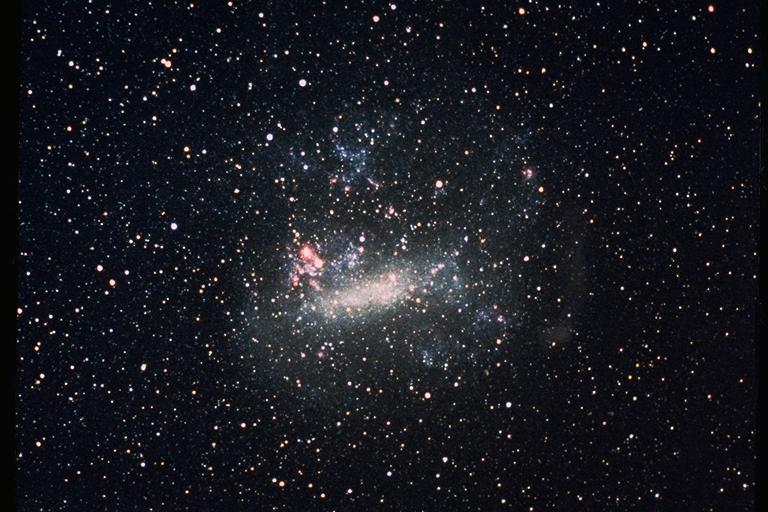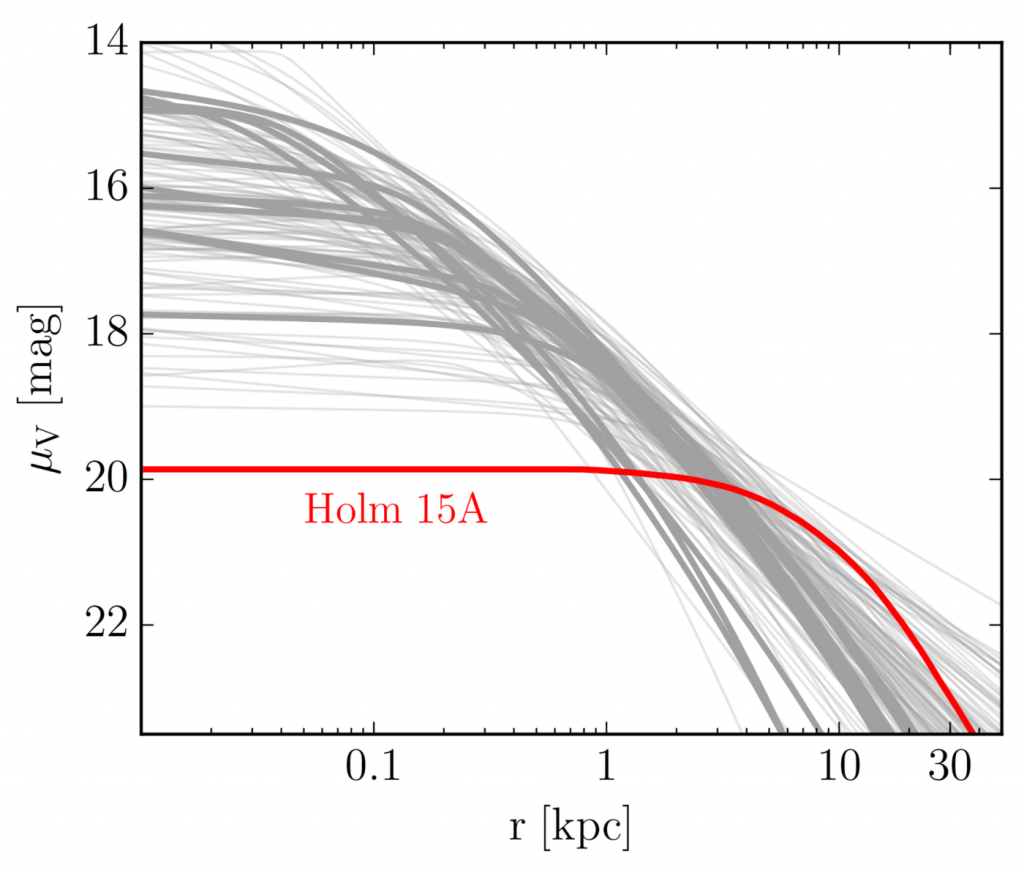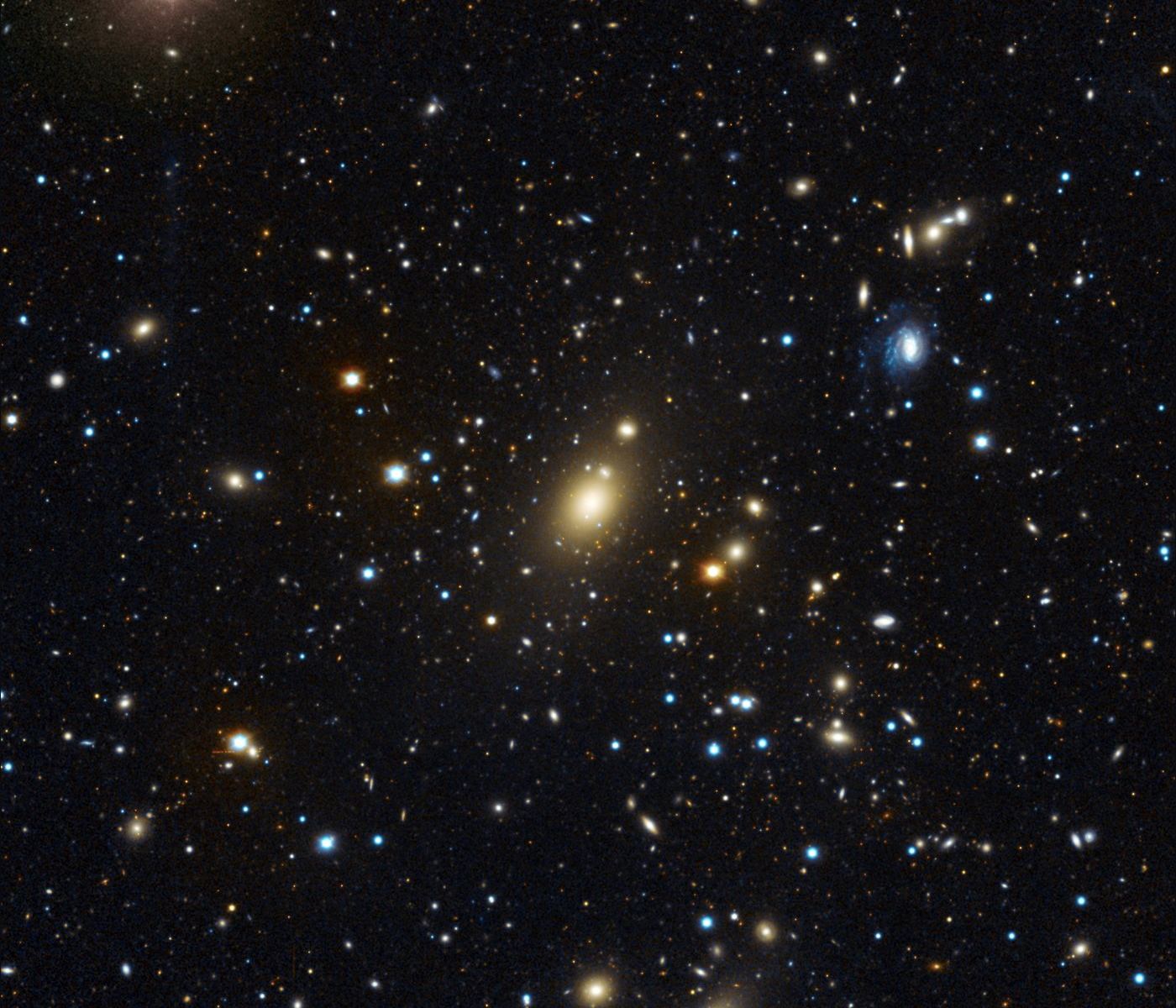Astronomers have spotted a 40 billion solar mass black hole in the Abell 85 cluster of galaxies. They found the behemoth using spectral observations with the Very Large Telescope (VLT.) There are only a few direct mass measurements for black holes, and at about 700 million light years from Earth, this is the most distant one.
Inside the Abell 85 cluster lies Holm 15A, a brightest cluster galaxy (BCG.) That means it’s the brightest galaxy in the Abell 85 cluster. The center of Holm 15A is diffuse, and very faint, even though the galaxy itself is very luminous, and has a visible mass of stars totaling two trillion solar masses. This apparent discrepancy caught the eyes of researchers at the Max Planck Institute for Extraterrestrial Physics (MPE) and the University Observatory Munich (USM.)
The new study was led by MPE scientist Jens Thomas. The diffuse central region in Holm 15A is almost as large as the Large Magellanic Cloud, and Thomas and the other astronomers thought this was a clue that an enormously massive black hole was present. The team used data from the MUSE spectrometer on the VLT and the USM Wendelstein Observatory to study this vast diffuse region.

In a press release, Thomas said “There are only a few dozen direct mass measurements of supermassive black holes, and never before has it been attempted at such a distance. But we already had some idea of the size of the Black Hole in this particular galaxy, so we tried it.”
The data from both telescopes allowed the team to perform a mass estimate based directly on the stellar motions around the core of the galaxy. When the data was in, the 40 billion solar mass supermassive black hole was revealed, making it the most massive black hole in the known universe.
“This is several times larger than expected from indirect measurements, such as the stellar mass or the velocity dispersion of the stars,” said Roberto Saglia, senior scientist at MPE and lecturer at the LMU.
Holm 15A’s center has a very low, diffuse surface brightness. It’s much fainter than in other elliptical galaxies. That’s a clue that many stars have been expelled from the center during the mergers that created this behemoth. LMU doctoral student Kianusch Mehrgan helped analyze some of the data in this study. In the same press relase, Mehrgan said “The light profile in the inner core is also very flat. This means that most of the stars in the centre must have been expelled due to interactions in previous mergers.”

Holm 15A is an Early Type Galaxy, or ETG. In the widely accepted view, the cores of these types of massive galaxies form due to a process called “core scouring.” When two galaxies merge, their black holes also merge. All those gravitational interactions have a slingshot effect on stars, ejecting them from the cores. With no gas left in the core, no new stars can form, which leads to this depleted type of core.
In fact, the light profile for Holm 15A suggests that the two elliptical galaxies that merged already had depleted cores from prior mergers. So that depleted, diffuse, huge core was a clue that an enormous black hole lies in the center.
“The newest generation of computer simulations of galaxy mergers gave us predictions that do indeed match the observed properties rather well,” said Jens Thomas, who also provided the dynamical models. “These simulations include interactions between stars and a black hole binary, but the crucial ingredient is two elliptical galaxies that already have depleted cores. This means that the shape of the light profile and the trajectories of the stars contain valuable archaeological information about the specific circumstances of core formation in this galaxy – as well as other very massive galaxies.”
The relationship between the light profile and the mass of the black hole could lead to a better understanding of black holes, and a new way of measuring their mass.
Most supermassive black holes are too distant to measure directly. But this research points to a new relationship between brightness and mass. Every time two black holes merge, the mass increases, but stars are ejected and the galactic core gets dimmer, assuming there is a lack of gas for new star formation.
The team intends to keep developing their model, and it may extend further than just measuring the mass of black holes. In their paper they say “Our results suggest that the exact shape of the central light profile as well as the details of the distribution of stellar orbits in the center contain valuable information about the merging history of very massive galaxies.”

The mass of most black holes is determined by measuring the motion of stars close to the galactic center. In very distant galaxies, the motions of those stars can’t be determined. But this new relationship between light and mass could form the basis for measuring the mass of more distant black holes. As the authors say in their paper, “In core galaxies, black hole masses scale inversely with the central stellar surface brightness and central stellar mass density – including in Holm 15A. We show this correlation here for the first time.”
If that correlation holds, it might be only a matter of time before this 40 billion solar mass black hole is dethroned, and a new, even more massive black hole takes its place.
More:
- Press Release: Heavyweight in the heart of the Abell 85 central galaxy
- Research Paper: A 40-BILLION SOLAR MASS BLACK HOLE IN THE EXTREME CORE OF HOLM 15A, THE CENTRAL GALAXY OF ABELL 85
- Universe Today Video: Supermassive Black Holes or Their Galaxies? Which Came First?

